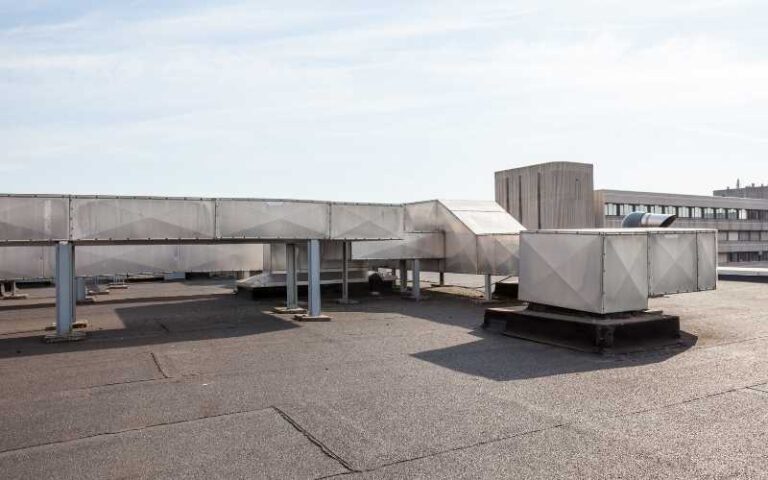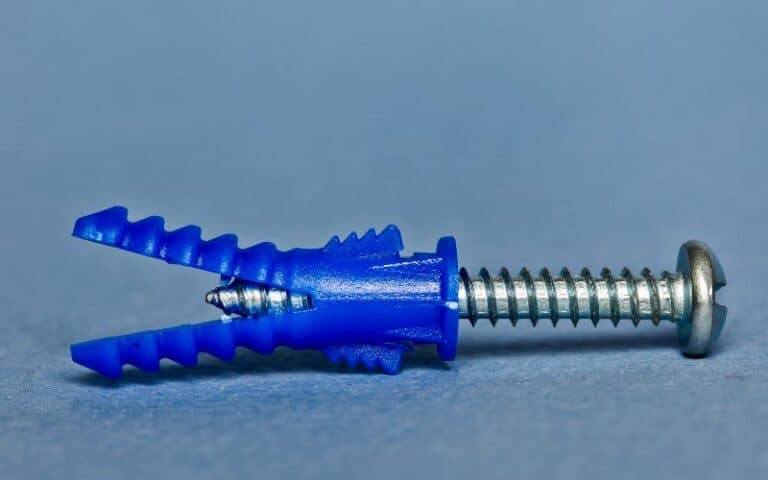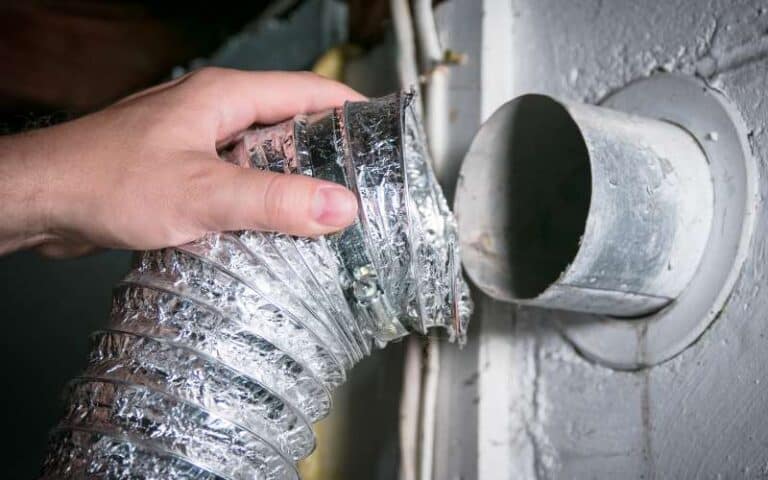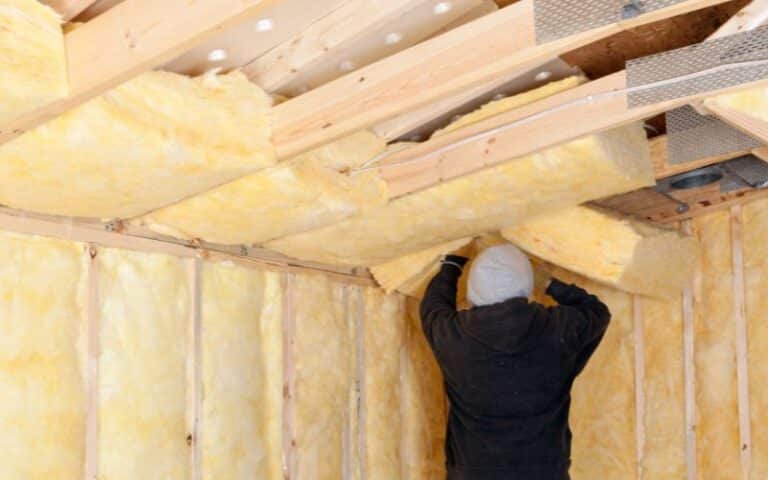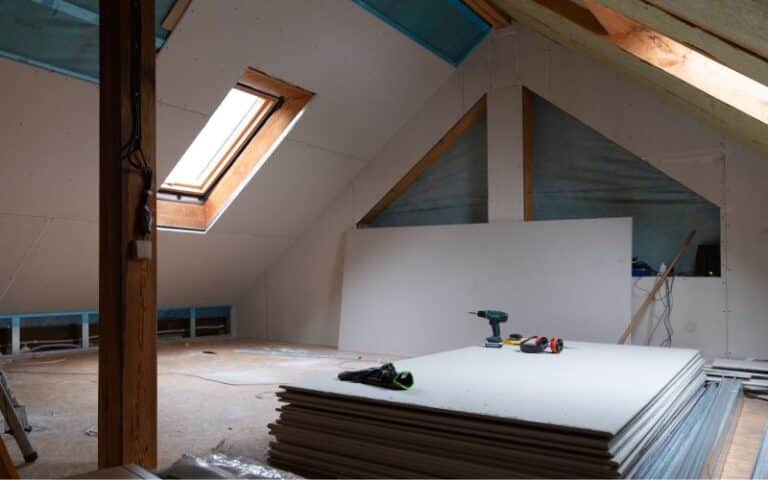Drywall is a material you use to give surfaces a smooth finish. After installing drywall to a surface, the following material to add is sheathing and siding.
Siding helps give your walls an added layer of protection and increase their aesthetic value. One common material people use as siding is T1-11.
That said, you may want to consider using T1-11 instead of drywall. But can you use T1-11 instead of drywall?
You can use T1-11 instead of drywall, but it may be expensive to maintain long-term. T1-11 is material for exterior use and is not suitable for interior use. It’s a rough texture, and the interiors are smooth.
In this article, I’ll explain the pros and cons of using T1-11 instead of drywall. You’ll learn how to install T1-11, and I’ll provide you with some of the uses of T1-11.
Ready for a Drywall Quiz?
Can You Use T1-11 Instead of Drywall?

Yes, you can use T1-11 instead of drywall. However, it’s not advisable to use T1-11 in place of drywall.
T1-11 is a siding material for the house’s exteriors, while drywall is for the interior walls.
Therefore, using T1-11 instead of drywall will do you more harm than good.
Here are some reasons you shouldn’t use T1-11 instead of drywall:
#1. It Goes Against Building a lot of Codes
According to most building codes on local guidelines, putting a siding such as T1-11 first is wrong. It should be drywall first before sheathing and the siding.
Therefore, if you decide to use T1-11 instead of drywall, you may face some consequences eventually.
#2. It is Rough for Interior Walls
The texture of T1-11 gives your wall a rough finish. This rough finish is suitable for using the material as siding but not for the interior walls. The interior walls should be smooth.
The drywall is smooth, making it perfect for your walls’ interior.
#3. T1-11 Is Prone to Moisture Damage
T1-11 has some wood components prone to moisture damage. If you frequently expose these materials to moisture on the interior or exterior, they will suck it up and fall apart.
On the other hand, drywall comes in a variety, some of which can withstand moisture.
#4. T1-11 May Compromise Your Safety
Installing T1-11 as an interior in place of drywall may cause safety hazards. There were reports in the past where residents complained of infections after using T1-11 for their interiors.
T1-11 is for the exterior part of the walls; through that, it can access fresh air.
#5. T1-11 is Prone to Fire Damage
Since T1-11 comprises wood, it is highly prone to damage from fire and fuel. Using T1-11 for your siding and drywall for your interiors would be best.
On the other hand, there are some fire-resistant varieties of drywall.
If you decide to use t1-11 for your walls, here is a table showing tools and materials for installing T1-11 and their uses.
| Tools and Materials | Uses |
|---|---|
| Measuring tape | To determine the height of the wall. |
| Stud finder | To mark out the location of the studs. |
| Nails | To secure the T1-11 sheets to the studs. |
| Nail gun | To drive the nails through the sheets and into the wall. |
Here are the steps to T1-11 on your walls:
- The first step is to check your local guidelines to determine if installing T1-11 instead of drywall in your home is illegal.
- You then have to decide where to install the T1-11. Use a measuring tape to determine the height of the wall.
- Trim the T1-11 sheet according to the height of your wall.
- You’ll need a seam and nail backing if the height of your wall is more than 8′ to 10.’
- Mark out the location of the studs on both the rim plate and top plate.
- Lay the T-11 at a corner of the wall. The sheet should flush with the studs at the corner, and once it is in place, drive a nail ¼”-¾” deep.
- Give each nail a spacing of about 8 inches at the edge and 12-inch spacing from top to bottom.
- Repeat the previous steps for all the other T1-11 sheets and seal the edges against moisture damage.
- Attach a layer of house wrap to the surface of the T1-11 after you complete the installation process.
The house wrap is an insulating layer that helps prevent damage by moisture, fire, and any other harsh elements.
Can You Use T1-11 for Roofing?
Yes, you can use T1-11 for roofing. You must ensure the sheets are thick enough to install roof sheathing.
Here is a table to show the materials you’ll need to install T1-11 for roofing and its uses.
| Cut the rafter to equal lengths. | Uses |
|---|---|
| Measuring tape | To find out the lengths of the rafters. |
| Pencil | To make marks on the rafters. |
| Circular saw | To cut the rafter to equal lengths. |
| Framing nailer | To drive the nails into the sheets and roof. |
Here are the steps to install T1-11 as roofing:
- Use a measuring tape to determine the lengths of each rafter on the roof from the shortest to the longest.
- Make a mark on the first and last rafter from the tip to the tail using a pencil, then snap a chalk line between them.
- Use a circular saw to cut out each rafter to the same length as the chalk line.
- Get a piece of T1-11 and carefully place it on the roof to align with the rafter tail ends.
- Secure the T1-11 sheet in place with a framing nailer. Leave a spacing of about 6 inches for each nail you drive in.
- Add another sheet of T1-11 next to the first sheet with about ⅛ inch spacing and secure it with a framing nailer. Repeat this process for the final T1-11 sheet for the first row.
- Start the second row above the first with a ⅛ inch spacing and secure the sheets with the framing nailer. Continue making rows until you reach the peak of the roof.
- Use the circular saw to cut off any excess T1-11 peeking out the roof’s edge.
Can You Use T1-11 without Sheathing?
Yes, you can use T1-11 without sheathing. Sheathing helps provide your walls or surfaces with a layer to protect against harsh elements.
The sheathing process comes before installing siding to the wall. T1-11 is a siding material that you install after sheathing.
However, you can install T1-11 on your wall without attaching a layer of sheathing.
What Can You Use T1-11 For?
T1-11 serves as the siding for the exterior parts of the walls of your home. Here are some essential uses of T1-11:
- T1-11 combined with house wrap or any other insulation layer is a waterproof wall barrier.
- T1-11 helps to provide your walls with more aesthetic value.
- T1-11 serves as a layer of protection for your walls against stains and dirt.
- T-11 serves as a protective layer for the wall against any intrusive elements.
- Although it is not advisable, you can use T1-11 instead of your drywall as an interior.
The Pros and Cons of Using T1-11 Instead of Drywall
Here are the pros of using T1-11 instead of drywall:
- T1-11 is easy to install and repair.
- The T1-11 will act as both the interior and the siding.
- You don’t need sheathing to install T1-11.
- The cost difference between T1-11 and drywall is high. You’ll save a lot of money using T1-11 instead of drywall.
- T1-11 is much stronger and more durable than drywall.
- T1-11 is very lightweight and energy efficient.
- T1-11 increases the aesthetic value of your home.
- T1-11 is easy to work with.
Here are the cons of using T1-11 instead of drywall:
- Using T1-11 in place of drywall does not align with most building codes.
- The result may not be pleasing as T1-11 has a rough texture, and the interiors are usually smooth.
- Using T1-11 as the interior instead of drywall may cause a compromise to your safety.
- T1-11 sheets will suffer damage when exposed to moisture.
- T1-11 sheet will suffer damage on exposure to fire.
- It may be expensive to maintain for long-term purposes.
- T1-11 is wood-based, which is prone to damage by insects.

